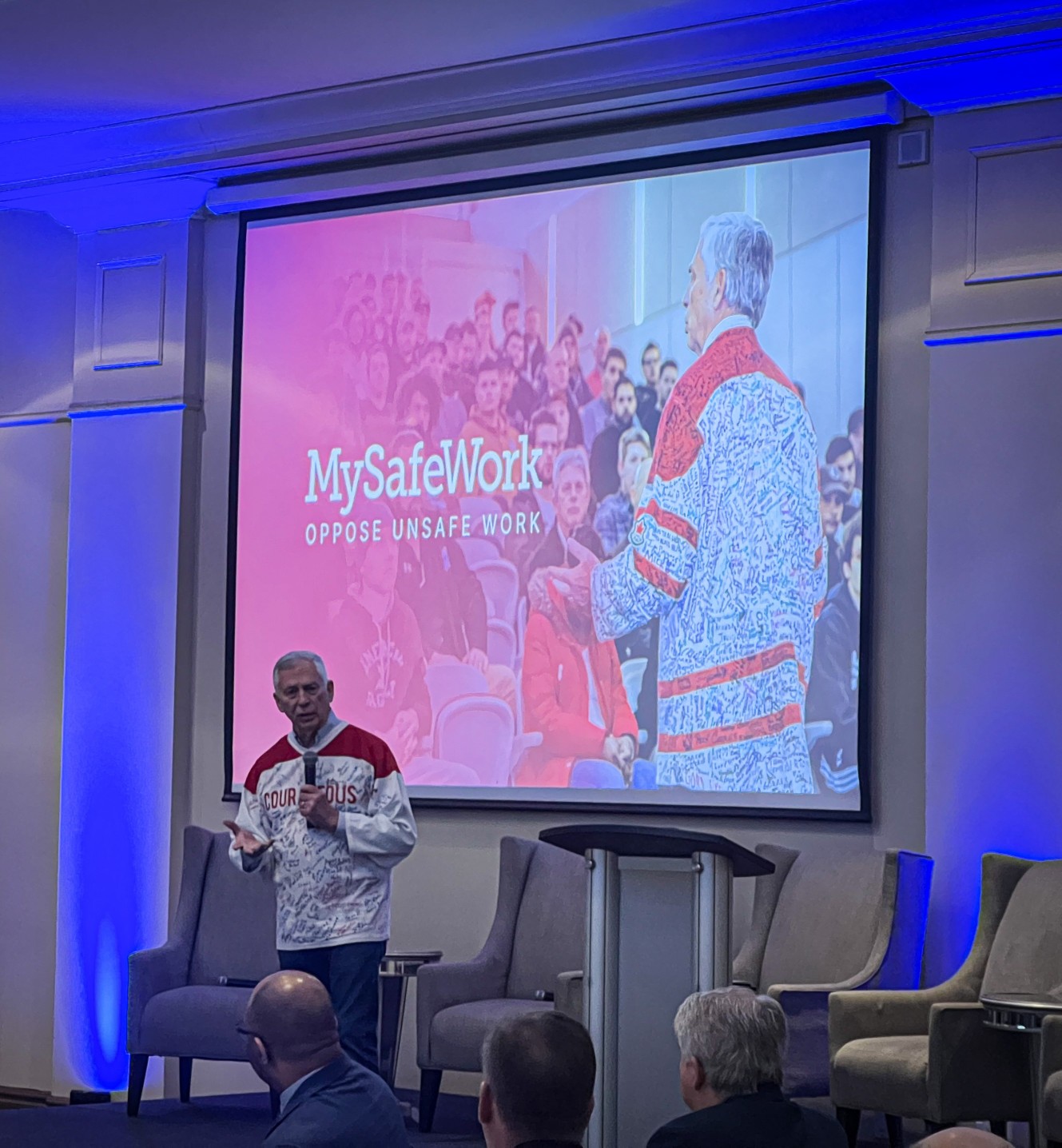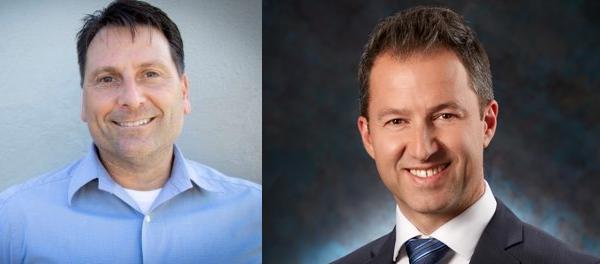The path to building safer and more resilient communities requires that both residents and stakeholders share a common message: safety is a shared responsibility. Through active partnerships, the emphasis on community safety has proven to be a documented return on investment, and not merely just a cost. These areas of focus were further expressed at the Building Safer and Resilient Communities Summit that was recently held at the Burlington Convention Centre.
The event, hosted by the Burlington Chamber of Commerce, featured keynote speakers Rob Ellis, Founder and President of MySafeWork, and Dr. Joel Moody, Chief Prevention Officer for the province of Ontario. A panel discussion followed, and panelists included Dr. Cebert Adamson, vice president (academic) at Mohawk College; Gerry Smallegange, president and CEO of Burlington Hydro; John Hutter, president of King Paving and Construction; and Karen Roche, fire chief for the City of Burlington Fire Department.
“Safety is at the very core of Burlington Hydro’s operation and our mission,” says Smallegange, who shared that, at one point, before safety standards were where they are today, the mortality rate for hydro employees was 10%. This rate would suggest that one in ten employees would not return to their families after a day’s work.
“At just 18 years of age, Rob’s son, David, was killed in a workplace accident; he was given very limited training and no supervision with his second day on the job. In response to this tragedy, Rob started MySafeWork,” introduced Smallegange.

Ellis’ journey on this path to awareness and continued advocacy has garnered attention across Canada and the United States. His passion for safety fuels purpose-driven initiatives within organizations that aim to foster leadership development, workplace culture, and safety.
Using Burlington Hydro as an example, Ellis says, “They hire to retire people, and I tell my young people to find an organization that wants to not hire you to fire you, but hire you to retire you.”
Workplace safety is not just physical safety, but it also encompasses workplace culture, and that is very important to many people, according to Ellis, as that level of respect is typically the key to employee retention. The respect Ellis speaks of is the respect that was lacking when his son was killed on the job.
“I am absolutely passionate about this because I lost my 18-year-old son, David, in a workplace that did not respect him, did not hold him in the highest regard as I do as a father. I love my son.”
The goal is to bring one generation of leaders and the next generation of leaders together, and have them both be on the same page, says Ellis. Based on his extensive experience speaking with organizations and young people, Ellis has discovered that many are after the following:
- great communication
- coaching and mentorship
- safety culture
- stress management
- wellness
The list goes beyond that, but these five are some items that are often brought up by a variety of age groups, from those both within the workforce and those entering it. However, it can be agreed that at the heart of it all is safety and security: physical, emotional, and mental. That safety is what continues to develop healthy organizations, and healthy employees, and foster effective leadership.
During the panel discussion that was moderated by Jennifer Smith, executive vice president and CPO of Burlington Hydro, the importance of safety culture continued to be echoed and panelists took a deeper dive to discuss the importance of collaboration with stakeholders to continue to build a resilient Burlington.
The panelists were selected based on their diverse perspectives; they are from a variety of professional backgrounds in different industries.
“Any fatality is avoidable, any fatality,” says Smallegange, “I think everything is preventable.”
“How do we share the message collectively across the institution, and how do we create that environment that everyone is owning it?” asks Adamson, who said that this question continues to drive the safety culture messaging at Mohawk College. Part of this initiative is beginning each meeting with a health and safety moment, to act as a touch-point between staff, clubs, and students.
Speaking about safety culture within the fire department, Roche said, “We’ve had to right a lot of wrongs from a historical [past perspective], you know, wearing the bunker stuff, no mask, and those people are unfortunately dying of various types of cancer.”
“We have to do things right, and that means coming right from the top. I need to live a life that has the safety culture, and I do, because I want to go home at the end of the day,” adds Roche, speaking to strengthening that safety experience as being absolutely paramount among fellow fire staff and emergency personnel.
For Hutter, becoming COR® (Certificate of Recognition) Certified six years ago — COR® is an occupational safety and health accreditation program that verifies that health and safety standards meet national standards — was a significant moment that allowed for King Paving and Construction to develop more than 250 safety-related procedures.

The last keynote speaker of the event was Dr. Joel Moody, and as the chief prevention officer for the province, part of his role includes carrying legislation responsibilities to the Minister of Labour, Training and Skills Development, and coordinating the activities of the health and safety system for the province. He is also responsible for ensuring that all of the businesses in the province are meeting and upholding safety standards under the obligation of the Health and Safety Act.
“The strategies are designed to think about moving our system forward through the knowledge, the practices, the skills, the abilities of employers and employees — shared responsibility,” says Moody.
It is not only with compliance because that in itself does not ensure safety. How to support and help people understand their roles, responsibilities, and obligations is absolutely critical, according to Moody, and that is not just for employers and employees, but for everyone in the community.
“The strategy is what we have designed to be the vehicle that coordinates our prevention activities in the province,” he said, focusing on four main objectives in Ontario’s occupational health and safety system (see image below).

Provincial safety objectives via Ministry of Labour, Training and Skills Development.
These objectives are designed to reduce fatalities. When comparing these fatalities by occupational issues, more specifically traumatic fatalities and occupational illnesses, the data and numbers paint a picture, points out Moody.
Of documented fatalities, 76% are accounted for by occupational exposure and occupational disease, while 24% were traumatic fatalities over the last ten years.
“Although we see the immediacy of the traumatic fatalities, the latency period that exists for exposure has increased more,” says Moody.
The goal is to advance occupational health and safety through this framework, with an intended and purposeful focus on the health, safety, and wellness of the workers. Innovative prevention is key to solving the challenges that exist, and Moody says this can be accomplished through reporting and metrics, data, investing with shareholders and engagement, focus on business (and effective leadership), standards and certifications, procurement education, and research.
“Safety is not owned by government, it is not owned by labour, it is not owned by employees and employers, but it is shared amongst us all. We all have responsibility,” wrapped up Moody.
The Building Safer and Resilient Communities Summit was held on February 8, 2024.




